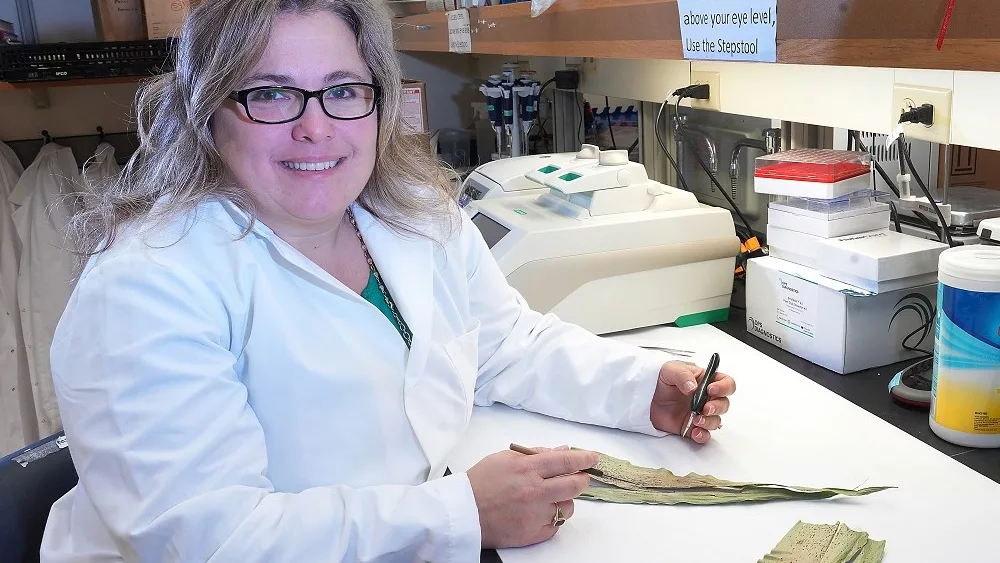Sweet corn naturally attracts butter and salt once it’s out of the field, but in the field, it can attract birds. There’s liquid repellants, propane cannons, and sound deterrents to keep birds away, but researchers from the University of Rhode Island have shown great success with using laser scarecrows.

Photo courtesy of Nora Lewis, URI
“The idea of using lasers for bird control was not particularly new—it had actually been investigated off and on since the 1970s when it was originally tested as a solution for bird control at airports,” said Dr. Rebecca Brown, associate professor of the department of plant sciences and entomology at the University of Rhode Island.
Brown gave her presentation during the 2020 Virtual Great Lakes Expo. Researchers noticed the birds were deterred by the bright search lights. Technologies and advancements were made to lasers over the years, and that lead to a new development.
“Commercial development continued, improvements in computer technology led to automated laser scarecrows with moving beams rather than the stationary beams of the early units,” she said. “[That] also led to units being operated on battery and solar power.”
Early in their research, Brown said existing laser scarecrows weren’t well-adapted for bird control in sweetcorn.
“We needed a laser scarecrow that could be easily moved between fields that didn’t require a large solar panel,” she added. “We needed to be able to block the beam from projecting in unwanted directions so it wouldn’t interfere with roadways, neighbors, or low-flying aircraft.”
Brown’s team then developed their own units, and over the three years of their research, they discovered there was a profound impact.
“When we talk to growers who have been protecting their entire field with a laser, they’re reporting less than 10 percent damage,” said Brown. “[On] neighboring fields on their farm—and they’ve only protected one of them—they will get 80 percent damage on the other field.”
Brown added that scarecrows need to be placed in the field before the birds discover the corn. Photos and the full research can be found here.





